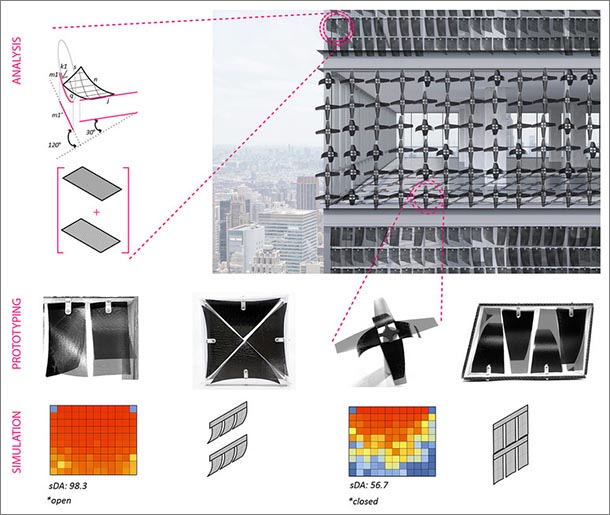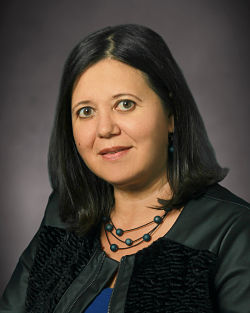
“This grant is important because it will allow us to build a full-scale prototype of the facade while at the same time fostering collaboration within Penn State between arts and architecture and materials science and engineering,” José Duarte, director of the Stuckeman Center for Design Computing, said.
Stuckeman School researchers receive interdisciplinary research grant
12/3/2020
UNIVERSITY PARK, Pa. — Elena Vazquez, an architecture doctoral candidate, and José Duarte, director of the Stuckeman Center for Design Computing, were recently awarded the American Institute of Architects (AIA) Upjohn Research Initiative grant for $25,000 to help further their research.
Penn State will match the funds, leaving Vazquez and Duarte with a grant total of $50,000.
Their project proposal, titled “Adaptive envelopes for a changing climate: Exploring bi-stability for building envelope design,” focuses on how smart materials can create kinetic facades in buildings.
According to Vazquez, the research aims to make buildings more efficient by allowing the exterior to respond to environmental conditions.
The purpose of their research is to “design and build envelopes to buildings that are smart,” added Duarte, the Stuckeman Chair in Design Innovation. By using smart materials, architects can use less resources to maximize the performance of a building.
The grant will allow Vazquez and Duarte to further their research and test the system they created. It will also create an opportunity for a master’s student in architecture to work on the project.
Zoubeida Ounaies, professor of mechanical engineering at Penn State who also is affiliated with the Department of Materials Science and Engineering in the College of Earth and Mineral Sciences, is contributing to the research project. Ounaies developed electro active material, which Vazquez and Duarte are using for their research. The material will be used as an actuator in combination with the bistable material, to develop a novel architectural system.
According to Vazquez, bistable materials are innovative in that they don’t require much energy to transfer between states, thus have great potential for designing efficient kinetic facades.
“We look at how this new technology can be applied in the design and construction processes. We also have this idea of contributing for the development of such technology so that it evolves in a way that it matches the needs of our fields,” Duarte said.
One of Duarte’s goals when he came to Penn State was to figure out how to develop collaborative research between arts and architecture and material science and engineering.
“One step is seeing how we can take advantage of the materials that they have already developed,” said Duarte. “The second step is to help guide them or help them find a direction in their research so that they develop materials that can be immediately useful to society, like materials that are of interest to architecture.”
The grant from AIA allows Vazquez and Duarte to have their research recognized at the national level. It also connects them with Skidmore, Owings & Merrill (SOM), which is considered one of the most significant architecture, urban planning and engineering firms in the world.
“We can work with SOM on a real-world case study where we can test and design for a specific building,” Vazquez said.
Vazquez holds a master of architecture degree with an emphasis on computational design. Her work has been acknowledged by the Graduate School’s Distinguished Master’s Thesis Award, which recognizes excellence in master’s-level thesis research.
Vazquez’s doctorate studies focus on using smart materials for architectural purposes and developing kinetic facade systems, an area of research rarely explored in the field of architecture.
“There has not been much work in studying how we can use bistable materials for kinetic facades,” Vazquez said. “That’s something that gets me really excited about this research.”




